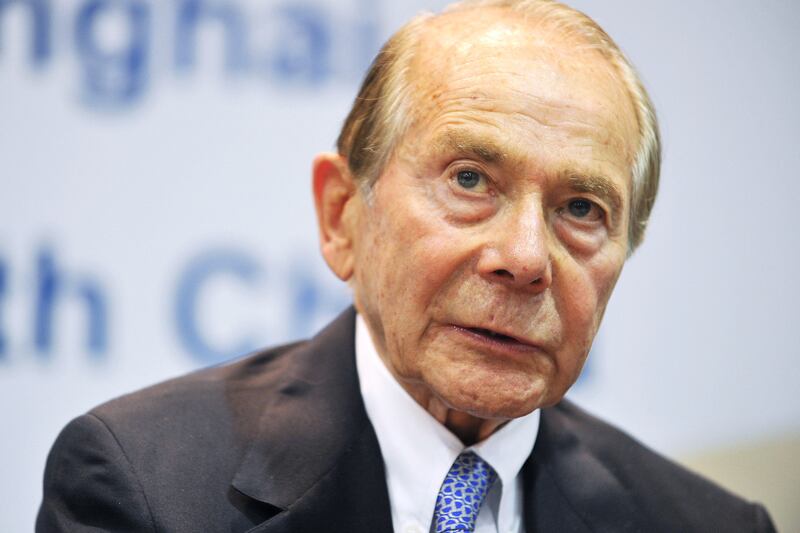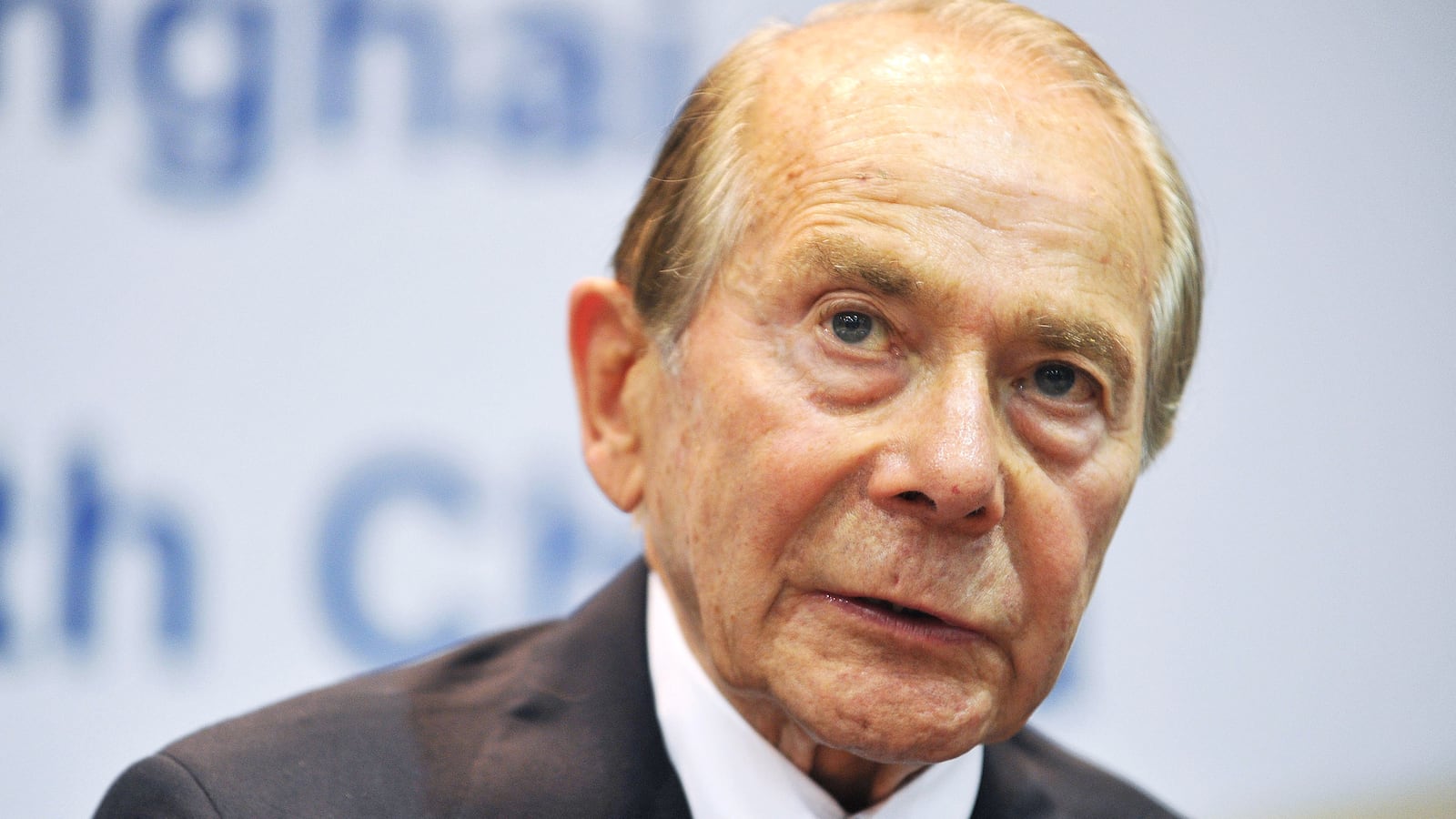The Internet commentariat erupted in outrage last night when The New York Times published a story by Ben Protess and Michael de la Merced, “Rescued by a Bailout, A.I.G. May Sue Its Savior.” The piece detailed an effort by the 87-year-old former AIG CEO Maurice “Hank” Greenberg to get the company to join his lawsuits against the New York Fed and the federal government alleging that they mistreated shareholders in the course of the $182 billion bailout in 2008 that rescued the insurance behemoth from near-certain bankruptcy.

There were no private actors willing or capable of lending money to AIG the week Lehman Brothers collapsed and the company was eventually rescued by a New York Fed loan of $85 billion, Greenberg insists, however, that the interest rates charged on the sum of the rescue loans of 14 percent was punitive. AIG is now fully in private hands and the government has received $22.7 billion in excess of their $182 billion in support.
But hold the outrage, at least for now. Greenberg is not AIG. His company, Starr International, is a large shareholder of AIG, but not the largest by a long shot. The Fairholme Fund and Fairholme Capital Management, two funds run by investor Bruce Berkowitz, own more than 165 million shares, 10 percent of the total outstanding shares, and AIG stock makes up nearly 40 percent of the two company’s assets, according to Morningstar. Third Point, the hedge fund run by Dan Loeb, owns 23.5 million shares, according to Morningstar, just more than 15 percent of the fund’s assets. In its most recent SEC filing, Starr International, a company controlled by Greenberg that owns his AIG stock, disclosed that it owns 13.9 million common shares of AIG, around 9 percent of the company. What Greenberg lacks in ownership stake, he makes up for in ill will toward the company’s current management and the government’s bailout plan.
Greenberg was chairman of AIG from 1968 through 2005 and was responsible for building it into an international insurance giant. He left the company in 2005 after then–New York attorney general accused AIG of accounting fraud. To settle an SEC investigation of accounting fraud, Greenberg paid a $15 million fine in 2009, and the company paid more than $1.6 billion in 2006. Since his exit, he has been a constant critic of its management, Spitzer, the federal government, and the New York Fed.
In a congressional oversight hearing in 2009 (PDF), Greenberg said that taxpayers would receive “only pennies on the dollar for their investment in AIG” if the government executed its plan to sell billions worth of AIG’s most valuable assets. He also said in the hearing that “it is clear that the current approach has not worked, and cannot work in today’s environment.” Greenberg did not blame the company himself, which was still a reflection of his decades running it, but the management who came in after he left. In response, AIG claimed that Greenberg was largely responsible for AIG’s entry into the credit-default-swap business that ultimately doomed the company and said, “We don’t understand how he can be viewed as having any credibility on any AIG issue.”
In 2010, AIG was able to sell ALICO to MetLife for $15.5 billion and AIA, its Asia-based life-insurance company, to Prudential PLC for $35.5 billion
The Times reported that the company’s board will meet on Wednesday to see a presentation by Greenberg and consider whether to join the suit. Greenberg’s legal efforts, in separate suits filed in New York and D.C. federal courts have been kicking around since 2011 and in November of last year, a district court judge in New York dismissed Starr International’s lawsuit against the New York Federal Reserve. The board’s consideration of the lawsuit comes at an awkward time for AIG, which is now entirely in private hands and has been running commercials saying “Thank You, America” for its billions in government support.
The lawsuit claims that the government and Fed’s bailout functioned as a “backdoor bailout” of AIG’s Wall Street trading partners who were paid at 100 cents on the dollar for their derivatives bets that AIG was not able to cover without government aid. More than $90 billion of the government’s bailout was used to pay off banks that were counterparties with AIG, including $12.9 billion to Goldman Sachs and $8.5 billion to Barclays. An upcoming memoir by Greenberg, cowritten with George Washington University professor Lawrence Cunningham, argues that “the Government seized AIG, using it to funnel staggering amounts of bailout money to Goldman Sachs and other ‘too big to fail’ banks.”
If there’s a chance that AIG could win a suit against the government or the New York Fed, Greenberg may merely be doing his duty as a shareholder to try to convince the board to consider the suit. But this also looks like a case of a large shareholder using his institutional and legal heft to exercise a grudge against the federal government that he thinks is responsible for helping Wall Street eviscerate the company he built.





